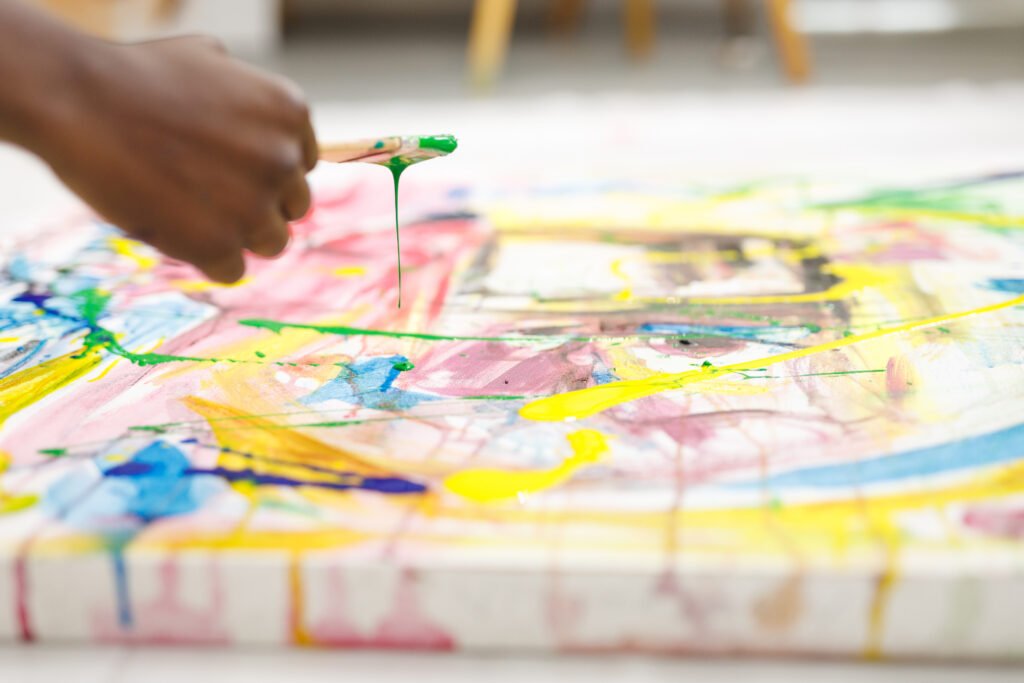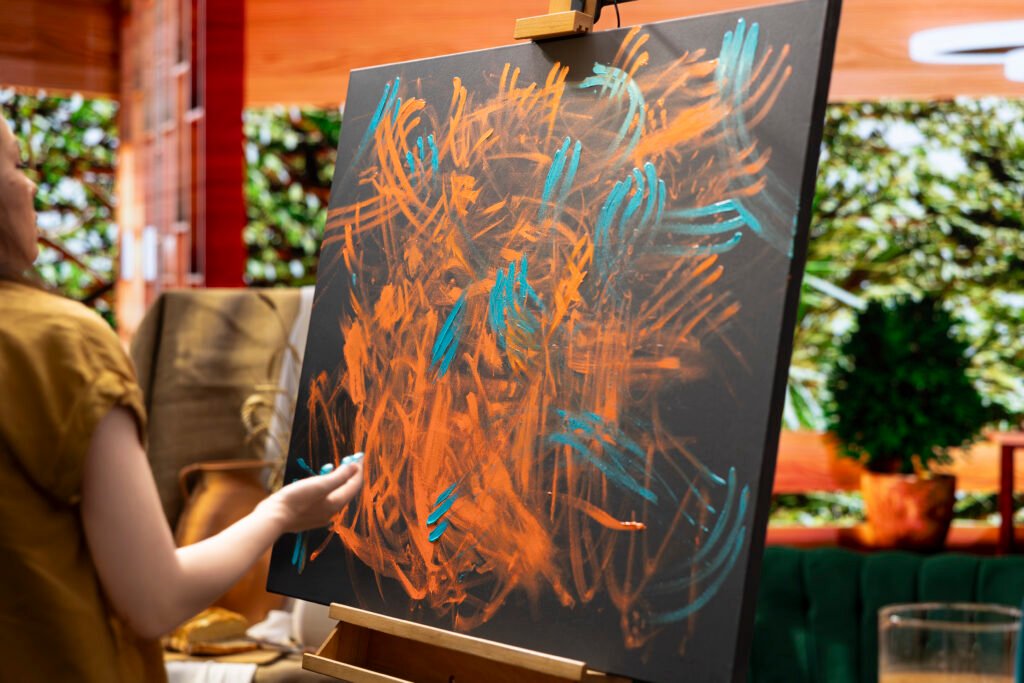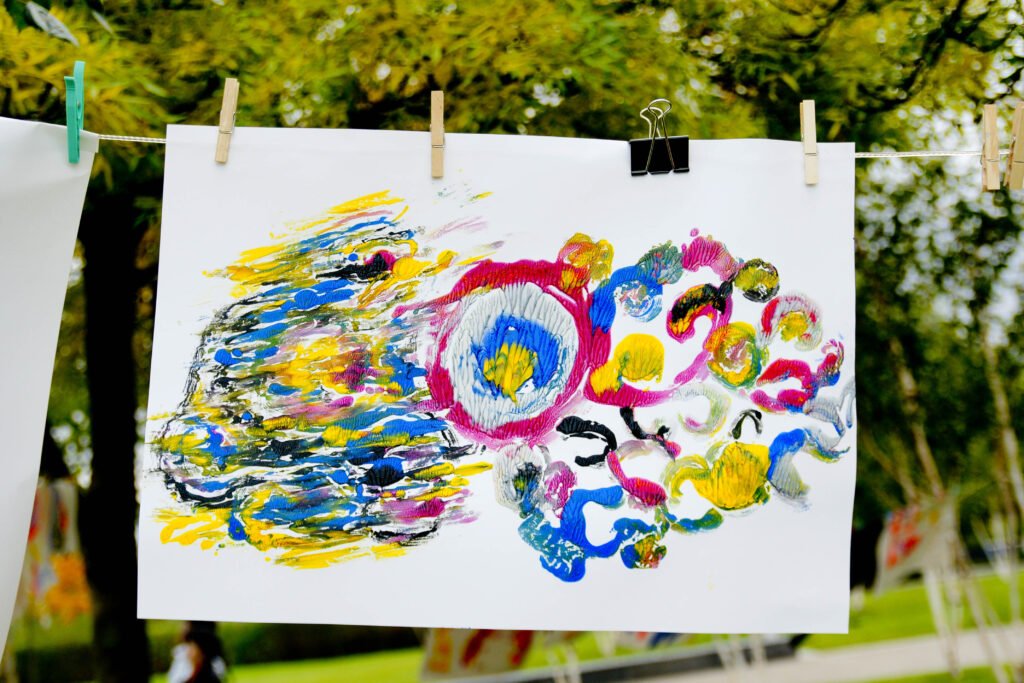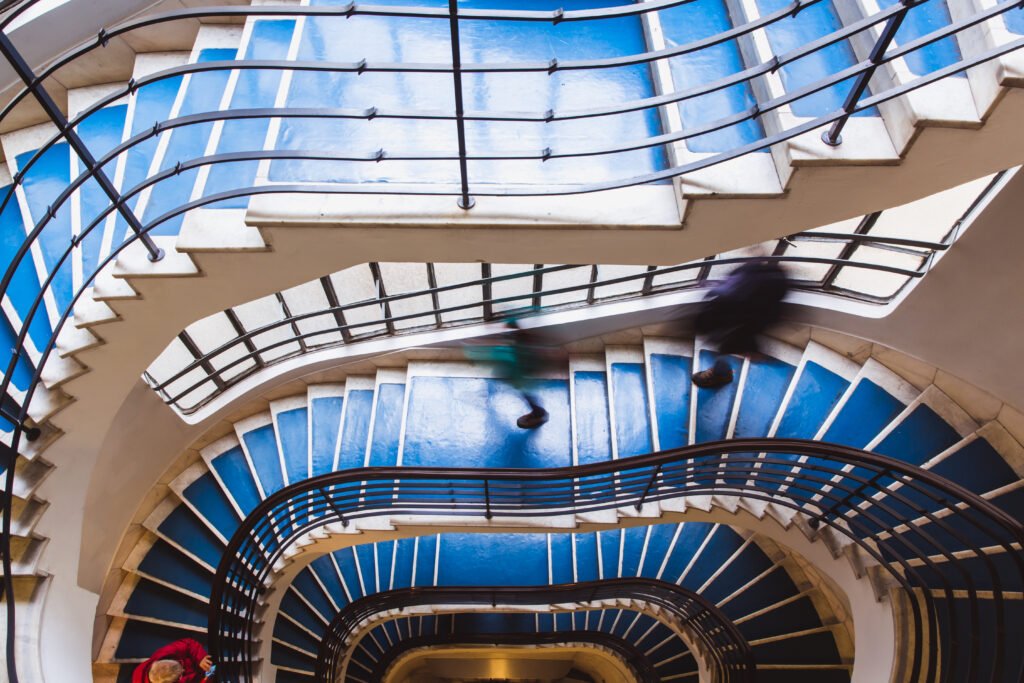Abstract art is not just a visual style but a language capable of completely altering the perception of a space. When we place an abstract painting in an environment, it ceases to be a merely functional room and becomes an extension of the subjectivity of those who inhabit it. That is why more and more people are looking to buy abstract art not only for aesthetics, but also as a tool of expression and emotional connection.
Whether in homes or corporate spaces, abstract paintings create unique atmospheres. They interact with architecture, affect light, influence emotions, and even impact the behavior of those present. This ability to reshape environments has made abstract art one of the pillars of contemporary interior design and a growing segment in the art market.
How Abstract Art Shapes Environments
The influence of abstract art on space is directly linked to how our brain responds to visual stimuli. According to the study The Effects of Visual Art on Mood and Stress, conducted in 2019 by the University of Arkansas, environments decorated with art featuring free forms and contrasting colors provide greater relaxation, creativity, and subjective well-being than neutral spaces or those decorated with figurative art.
This emotional response occurs because abstract art stimulates open interpretation, allowing each individual to project their own experience onto the work. Rather than imposing a meaning, it invites active contemplation. Therefore, when choosing abstract paintings, one is not simply purchasing an image but acquiring an emotional focal point that changes how the space is perceived.

In addition, using abstract art in design allows for the creation of visual contrasts or harmonies that affect a room’s dynamic. Vibrant colors, asymmetrical forms, and unexpected textures break monotony and suggest movement. Meanwhile, works with softer palettes and balanced compositions enhance sensations of calm and introspection.
It’s no coincidence that architects and interior designers often recommend abstract art in high-end projects. This visual language adapts to various styles — from minimalism to maximalism — and offers both aesthetic and symbolic versatility. A single painting can turn an ordinary room into a contemplative space.
A Heated Market: Investment and Style
The growing value of abstract art in the market parallels its increasing presence in residential and corporate environments. According to the study Global Art Market Trends Report, published in 2022 by New York University, the sale of abstract art accounted for 38% of gallery transactions online, making it the category with the highest resale and appreciation rate in the period analyzed.
This popularity is also reflected in the interests of those seeking to buy abstract art. The demand for authentic pieces, whether signed or by emerging artists, has risen significantly in the past five years. Buyers are no longer just decorating; they are participating in a cultural movement and, at the same time, building aesthetic and financial assets.
Moreover, the digital environment has made access to high-quality collections and curatorship easier. Today, it is possible to find the best places to buy art from home, using platforms that guarantee authenticity and provide artwork certification. Specialized websites such as Saatchi Art, Artsy, and independent online galleries have become global showcases for contemporary abstract artists.
Another factor boosting the abstract art market is its link to emotional architecture. Choosing a piece depends not only on its visual appeal but also on the effect it has on the space. In a world saturated with digital stimuli, abstract art offers pause, reflection, and presence. It does not merely decorate — it anchors emotion.
Therefore, when seeking abstract paintings, it’s not just about acquiring a decorative object. It’s about transforming space and daily experience. Whether for its aesthetic impact, emotional resonance, or market value, abstract art continues to expand its meanings and possibilities, making it a smart choice for those who want more than beauty — they want impact.



